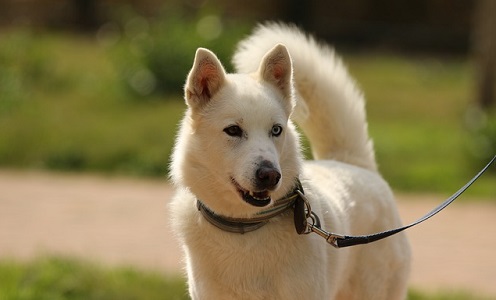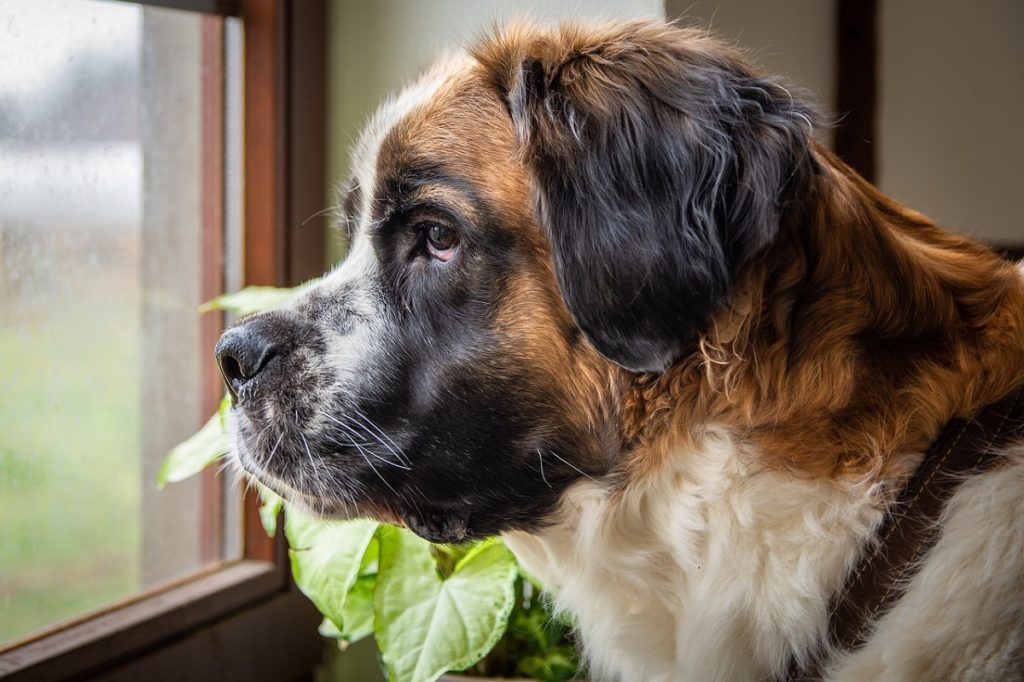Just like in humans, dogs are also susceptible to hemorrhoids as well. For those that don’t know, hemorrhoids are swollen blood vessels in the anus and rectal area. This occurs when the blood vessels in a dog’s anus become enlarged due to increased blood flow, causing them to grow.
However, with that being said, hemorrhoids in dogs are a lot more rare for dogs than their human counterparts. Even if a dog does get hemorrhoids, it is still important to seek treatment as soon as possible. Hemorrhoids can worsen over time and become extremely painful for your four-legged companion if left untreated. If your dog has hemorrhoids, understanding the cause, signs, and symptoms will help you get him the treatment he needs as soon as the issue develops.
Causes of Dog Hemorrhoids
While dog hemorrhoids tend to occur when there is pressure to the rectal area, this isn’t the only way hemorrhoids can form. Professionals have also proven that hemorrhoids can develop as the result of a poor diet. Poor dietary habits can lead to canine digestive issues, leading to hardened stools which cause pressure to the blood vessels of the rectum. Pressure causes these blood vessels to expand, which in turn results in an increase in blood flow.
 Naturally, any inflamed or bulging skin will become sensitive over time. When a dog’s rectum becomes sensitive, regular movements such as sitting will become painful. Moreover, hemorrhoids can be both internal and external. While external hemorrhoids can be found outside the rectum or directly under the skin, internal hemorrhoids are found inside the rectum. Generally, external hemorrhoids are more painful than internal hemorrhoids. Both types of hemorrhoids can rupture, leading to further discomfort and issues.
Naturally, any inflamed or bulging skin will become sensitive over time. When a dog’s rectum becomes sensitive, regular movements such as sitting will become painful. Moreover, hemorrhoids can be both internal and external. While external hemorrhoids can be found outside the rectum or directly under the skin, internal hemorrhoids are found inside the rectum. Generally, external hemorrhoids are more painful than internal hemorrhoids. Both types of hemorrhoids can rupture, leading to further discomfort and issues.
Dog Hemorrhoid Symptoms & Signs
Typically, there are three telltale signs associated with dog hemorrhoids:
- Pain and discomfort when sitting
- Itchiness around the anus
- Scoots his but on the ground
- Visible external hemorrhoids in the rectal area
- Bloody stools
If you notice your dog unable to sit or is visibly uncomfortable whenever pressure is applied to his hindside, take note. Bloody stool is a common sign of hemorrhoids in dogs because the canine will often scoot his butt on the ground, causing irritation or the hemorrhoids to burst. If you suspect that your dog has hemorrhoids, check his stool for traces of blood and monitor his behavior.
If you notice any of these symptoms, it’s recommended you go to the vet as soon as possible You’ll want to get a definitive confirmation your four-legged friend does, in fact, have them and is not suffering from another condition. Prolapsed rectum and anal gland problems are two examples of more common issues mistaken with hemorrhoids.
How to React
Understanding the signs and symptoms of dog hemorrhoids is key, and knowing how to react puts you in the best position to care for your furry friend. If it’s been confirmed your dog indeed has this problem, there are a few hemorrhoid treatment options for dogs your vet may recommend.
 One is a natural witch hazel. Try damping a cotton ball in refrigerated witch hazel and applying it directly to your dog’s hemorrhoids. The combination of witch hazel and cold temperature helps constrict the blood vessels. Vets recommend applying this up to three times a day.
One is a natural witch hazel. Try damping a cotton ball in refrigerated witch hazel and applying it directly to your dog’s hemorrhoids. The combination of witch hazel and cold temperature helps constrict the blood vessels. Vets recommend applying this up to three times a day.
Aside from this topical treatment, changing your dog’s diet is another effective way to fight against hemorrhoids. Ask your vet for a dog nutrition checklist so you can find a food product that offers all the required nutrients. Increasing your dog’s fiber intake can also be very beneficial when treating hemorrhoids.
Extra fiber will help aid in digestion and keep food moving how it should. Instead of dry dog biscuits, feed him fiber-rich foods like carrots, apples, oats, whole grains, legumes, pumpkin, and flaxseed. Do your best to eliminate dairy products from his diet until the hemorrhoids have subsided.
Lastly, make sure your dog is drinking plenty of water on a regular basis. The best thing you can do is to make sure you have a clean bowl of fresh water out at all times. As always, supplementing water intake and diet with proper exercise puts your pup in the best position to live a happy and healthy life.
At the end of the day, knowing the common signs and symptoms of dog hemorrhoids and understanding how to react to them is important to you as a dog owner. Even if hemorrhoids are rare in dogs, it’s still wise to be educated on this health problem so you can treat your pet as quickly as possible if they develop.
Sources:
- Petzler, Rex. “All You Need to Know About Hemorrhoids in Dogs.” PetPlus Blog, 2 Feb. 2018, www.blog.petplus.com/pet-plus-pups/all-you-need-to-know-about-hemorrhoids-in-dogs/#.
- “Symptoms of Dog Hemorrhoids.” VetInfo, www.vetinfo.com/symptoms-dog-hemorrhoids.html.
- “How to Treat a Dog’s Hemorrhoids at Home.” Cuteness, www.cuteness.com/article/treat-dogs-hemorrhoids-home.




